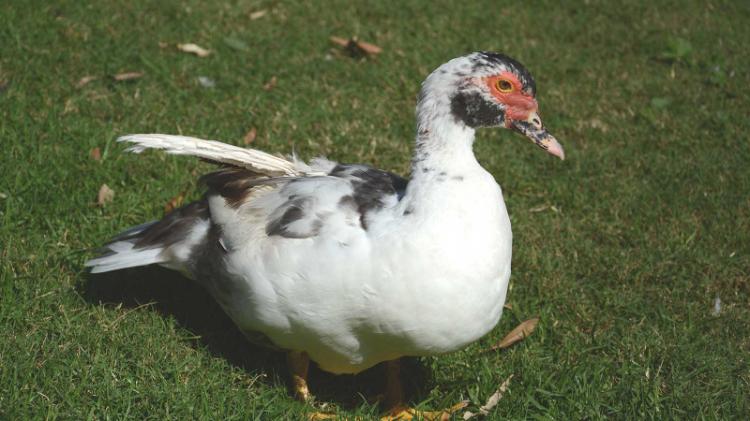We have beautiful campus and the ducks are an intrinsic part of our campus environment and hold a special place in the hearts and minds of our past and present students and staff.
Get to know the ducks
Pacific Black Ducks, White-eyed Ducks and Australian Woods Ducks are common on campus. These ducks will keep their distance from people and often stop traffic as they walk across the campus ring road.
A number of other native water birds are found at UOW including the Dusky Moorhen (Gallinula tenebrosa), Eurasian Coot (Fulica atra) and the Purple Swamphen (Porphyrio porphyrio). Occasionally you might also see the Buff banded rail (Gallirallus phillippensis), Royal Spoonbill (Platalea regia) and White-faced Heron (Egretta novaehollandiae).
Pacific Black Duck

The Pacific Black Duck (Anas superciliosa) spends a lot of its time in the water as it feeds on the seeds of aquatic plants, crustaceans, molluscs and insects.
Image: Pacific Black Duck. Photograph courtesy of A Wardle
White-eyed Duck

The White-eyed Duck or Hardhead (Aythya australis) is seen in the ponds on campus but is rarely seen on land. The ducks diet consists of aquatic plants as well as mussels and shellfish.
Image: White-eyed Duck. Photograph courtesy of A Wardle
Australian Wood Duck

The Australian Wood Duck (Chenonetta jubata) spends much of its time feeding on grasses and insects on the grassy lawns around campus. Breeding pairs stay together and raise their young. There are always plenty of Australian wood duck ducklings to be seen with their parents during spring. Please admire the ducklings from a distance as the parents will become protective of their young.
Image: Australian Wood Duck and chicks. Photograph courtesy of A Wardle
Introduced ducks
There are also a number of introduced ducks at Wollongong Campus. These ducks were once domestic pets that have been dumped on campus by their owners and then have bred amongst themselves. These species on campus will eat grass and other insects but are opportunistic and aggressive and have been known to steal people’s lunches. They also can create health and safety issues with duck poo around the campus eateries.
Muscovy Duck
The Muscovy Duck (Cairina moschate) is an introduced duck that has a distinctive red fleshy and lumpy face. They can be aggressive fighting over food and mates. Muscovy Ducks do not swim and spend all of their time on land.
Image: Moscovy Duck. Photograph courtesy of A Wardle
Khaki Campbell (cross) Duck

Khaki Campbell Ducks are an introduced duck that love the water and will spend a lot of their time swimming.
Image: Khaki Campbell (cross) Duck. Photograph courtesy of A Wardle
Baxter the duck

Baxter the duck is UOW’s mascot and was named after Sir Phillip Baxter who played a role in the founding of UOW.
Please don't feed the ducks
A number of problems are created by feeding the ducks directly or leaving food out for the ducks on the lawn or near the ponds on campus.
- The ducks can become dependent on you feeding them and will not forage for food themselves.
- The ducks will become aggressive and steal food from unsuspecting people.
- Leaving food on the lawns or around the ponds attracts vermin (rats and mice) and other birds which will create their own set of problems. If the food enters the ponds and creek areas it will also foul up the water.
- Feeding the ducks bread can cause digestive problems and Avian Botulism which is fatal.
Please help prevent unnecessary impacts on our campus environment and its wildlife.
References & resources
- Birdlife Australia (nd) Birds in Backyards, Australian Wood Duck
- Birdlife Australia (nd) Birds in Backyards, Pacific Black Duck
- Birdlife Australia (nd) Birds in Backyards, Hardhead
- Mathiesen, K (2015) Don’t Feed the Ducks bread, say conservationists, The Guardian, Online
- Get to know the ducks Factsheet (pdf).
